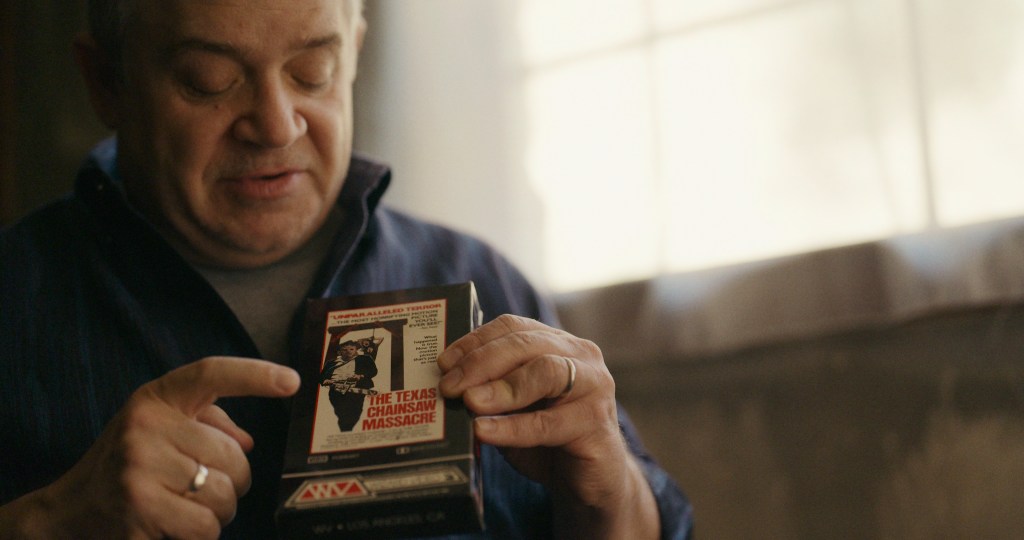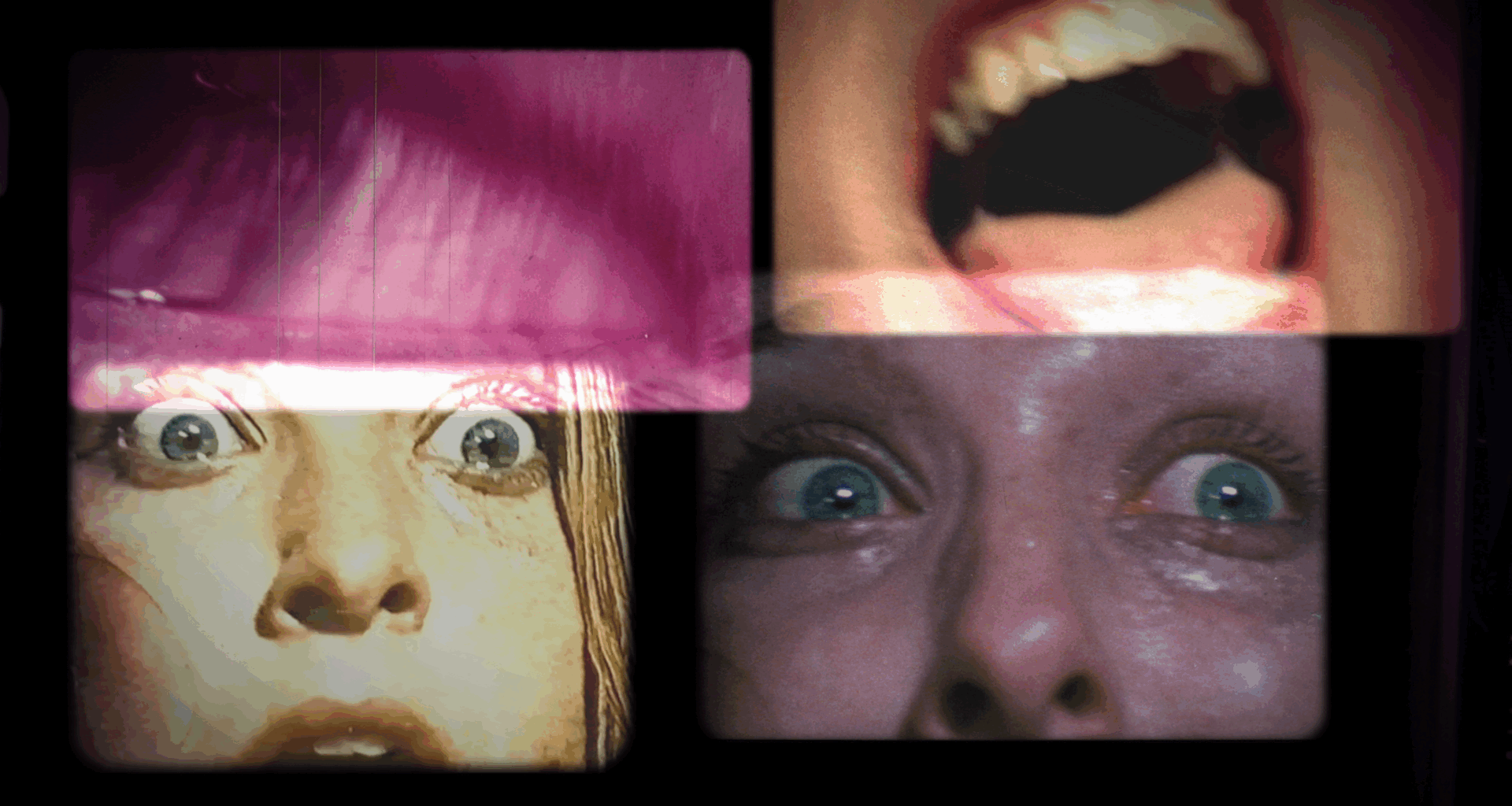The title is genius. A collection of simple words that conjure a universe of dread: The Texas Chain Saw Massacre. It’s a promise of geographical terror and mechanical violence that Tobe Hooper’s 1974 masterpiece delivers with the subtlety of a sledgehammer to the skull. Over 50 years later, the film’s grimy, sun-scorched soul continues to haunt us, its legacy a labyrinth of cultural trauma, artistic inspiration and a profoundly altered perception of the Lone Star State.
Now, documentary filmmaker Alexandre O. Philippe, a cinematic essayist known for dissecting horror classics like Alien and The Exorcist, turns his lens on Hooper’s magnum opus with Chain Reactions. The film isn’t just another making-of — it’s a poetic and deeply personal exploration of how a “scruffy, no-budget independent film wormed its way into our collective nightmares and permanently altered the zeitgeist.”
On Oct. 17 and 23, the Texas Theatre in Dallas will host special screenings of Chain Reactions, followed by a presentation of the original Texas Chain Saw Massacre. It’s a fitting homecoming for a story so deeply woven into the fabric of Texas mythology.
Philippe’s work is less about trivia and more about texture. He’s fascinated by how great art operates on a subconscious level, with artists acting as conduits for something larger.
“That’s kind of my life’s work,” Philippe explains. “I’m more interested in artists channeling the zeitgeist through craft and coming up with works that are not fully conscious.”
He points to Hooper’s own apocryphal story of the Texas Chain Saw Massacre’s inception — being stuck in a crowded mall at Christmas, spotting a display of chainsaws and having a primal urge to cut through the crowd.
“But then he said something that’s really interesting,” Philippe notes. “‘And then the zeitgeist blew through me.’ Think about that for a second.”
Chain Reactions argues that Hooper didn’t just tap into America’s post-Watergate, Vietnam-era anxieties; he created something prescient. As interviewee Stephen King posits in the documentary, the film “preceded the zeitgeist. It created its own zeitgeist.” Philippe agrees, seeing the film as more relevant today than ever.
 Stephen King, in his reimagined guest house, channels the eerie aesthetic of The Texas Chain Saw Massacre for his segment in Chain Reactions.
Stephen King, in his reimagined guest house, channels the eerie aesthetic of The Texas Chain Saw Massacre for his segment in Chain Reactions.
“It’s a movie that is, in many ways, even more relevant today about, very sadly, America sort of tearing itself apart needlessly,” he says. “It’s not something that Tobe Hooper could have thought about. It’s not like he woke up one day and thought, ‘Oh, I’m gonna make this film, and then 50 years from now, it’s gonna resonate with AI replacing people. It’s gonna resonate with climate change. It’s gonna resonate with America tearing itself apart.’ So, what is it then? What is it that makes a film continue to resonate?”
For Philippe, the answer lies in that mysterious, unconscious frequency that certain artists are able to tune into, channeling stories that we as a collective need to process.
The Mythic Resonance of Texas
Central to the film’s power is its setting. Before 1974, Texas might have conjured images of cowboys, oil rigs, or, as author Alexandra Heller-Nicholas mentions in the film, Road Runner cartoons. After, it was a place of desolate landscapes and unspoken horrors lurking just off the main road.
Japanese cult director Takashi Miike, another of the documentary’s five primary subjects, recalls, “In Japan at the time, because of that film, everyone thought Texas was a dangerous place.”
Philippe, a Swiss native, understands this cinematic shaping of geography. He recounts a recent scouting trip near Austin with the original film’s co-writer, Kim Henkel.
“Man, did we drive by some creepy houses that were boarded up. And you got the sense that if you go knock on that door, you might not come back alive,” Phillipe recalls with a laugh. “A lot of it, I’m sure, is imagined.”
Imagined or not, the threat felt real. At one point, they found a dilapidated house swarmed by buzzards, a perfect potential location. When they told neighbors what they were doing, the warning was stark: “Don’t go there. If the owner is there and you step on his property, he will shoot you.”
This inherent sense of danger, of vast and unsettling landscapes, is part of what makes Texas such a potent creative springboard.
“I think it’s an unsettling state,” Philippe says. “There is something about this idea or this feeling of if you take the wrong turn in rural Texas… places that have a very sort of weird energy to them.”
The state’s name itself became an incantation.
“It’s very interesting to me how, if you think about the title of the film, how brilliant it is in retrospect that they used the word Texas in it,” Philippe says. “You could literally use any other state —The Virginia Chain Saw Massacre, The Hawaii Chain Saw Massacre — and it just wouldn’t land the same way. So, Texas clearly embodies and represents something not just in America, but around the world. It has a resonance to it, and it has a mythic resonance. And I think that mythic resonance is actually what works so well with the title.”
A Frankenstein of a Ghost House
To capture this mythos, Philippe constructed his documentary to mirror the original film’s structure and tone. Chain Reactions unfolds over a single day, from high noon to a hopeful sunrise, with each chapter lit for a specific time of day. The interviewees — Patton Oswalt, Takashi Miike, Alexandra Heller-Nicholas, Stephen King and Karyn Kusama — are filmed in what Philippe describes as a “ghostly, expressionistic version of the original Sawyer house.”
This setting is a “Frankenstein version” of the infamous home, a composite of four different locations stitched together to create one seamless, haunted space. Three interviews were shot in a Los Angeles house that had partially burned down, with one segment filmed in a room where two people had died in the fire.
 Comedian and cinephile Patton Oswalt revisits the gritty nostalgia of The Texas Chain Saw Massacre on VHS in Chain Reactions.
Comedian and cinephile Patton Oswalt revisits the gritty nostalgia of The Texas Chain Saw Massacre on VHS in Chain Reactions.
“There are already ghosts in the film itself,” Philippe notes.
Stephen King was filmed in his Florida guest house, which the crew painstakingly dressed to look like a creepy basement. The exteriors were shot at an abandoned house in Last Chance, Colorado, serendipitously surrounded by the same species of dried sunflowers seen in Hooper’s film.
The result is a film that feels like a tonal extension of the one it’s examining. Philippe and his cinematographers use canted angles and slow, deliberate tracking shots, like one that sneaks up on Oswalt as he watches the movie on a tube TV to evoke the memory and texture of how many first experienced this cinematic trauma.
Finding Beauty in the Buzz
Chain Reactions doesn’t just dissect the horror; it celebrates the artistry. It’s a film about the poetry of a fan-made trailer, the sensory experience of a beat-up Australian VHS tape, and the strange beauty found in the gore. It’s about how, as Heller-Nicholas says, The Texas Chain Saw Massacre is a movie you feel before you think about it.
The documentary uses never-before-seen outtakes from the original production, one of which provided Philippe with the question he’d most want to ask Tobe Hooper.
“In the opening sequence of Chain Reactions, there is this gorgeous shot they found of this huge spider,” he explains. “And it rack focuses to [the characters] Pam and Kirk walking away towards the Sawyer house. As the rack focus happens, the spider is on Pam’s bare back. And when I saw that shot, I’m like, ‘What a great foreshadowing for the hook.’”
“So, my question for him would be like, ‘Why did you not include this shot?’ Man, what a great shot. So that’s why I had to include it.”
It’s these small moments of discovery that make Chain Reactions such a compelling companion piece. It honors a film that, despite its induction into the Museum of Modern Art, still fights for its legitimacy as high art. For Philippe, there’s no debate.
“You can make an argument, and I certainly would, that you can remove the word ‘horror,’” he states. “I think it’s one of the treasures of world cinema, and one of the greatest films ever made, without question.”
Chain Reactions screens at the Texas Theatre on Thursday, Oct. 17, at 7:15 p.m., followed by The Texas Chain Saw Massacre at 9:45 p.m. There will also be an encore screening of both films at the Texas Theatre on Oct. 23. Chain Reactions will play at 6:45 p.m. and The Texas Chain Saw Massacre at 9:15 p.m.
